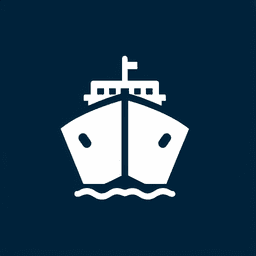
Aft: Definition and Examples in Nautical Terms
January 16, 2025
Aft
The term "aft" is a nautical term used to describe the direction towards the stern (rear) of a ship or boat. It is an essential part of maritime vocabulary, helping sailors and maritime professionals communicate effectively about the positioning and movement on a vessel.
In the context of a ship's layout, "aft" is used to indicate anything located towards the back of the vessel. For example, an "aft cabin" would be a cabin situated towards the stern. Similarly, when giving directions on a ship, one might say "move aft" to instruct someone to go towards the rear of the vessel.
Understanding the term "aft" is crucial for navigation and safety at sea. It helps in the clear and precise communication necessary for maneuvering and operating a ship, especially in complex situations such as docking, anchoring, or during emergencies.
In addition to its directional use, "aft" can also be part of compound terms such as "aft deck," "aft sail," or "aft section," each referring to specific parts of the ship located towards the stern.
Overall, the term "aft" is a fundamental component of maritime language, ensuring that sailors can efficiently and safely manage their vessels.
Understanding the Term 'Aft' in Maritime Context
The term 'aft' is commonly used in the maritime industry to refer to the rear or back part of a ship. This is a crucial term for anyone involved in maritime activities, as it helps in understanding the layout and navigation of a vessel.
People Also Ask
- What is the meaning of AFT in maritime terms?
The term 'aft' originates from the Middle English term 'aftan' and refers to the rear part or the stern of a ship or a boat. It is a key term in maritime navigation and ship design. - What does the term aft refer to?
'Aft' refers to the direction towards the stern or the back end of a vessel. It is used to describe the location of various parts of the ship relative to the stern. - Why do they call it aft?
The term 'aft' is derived from the Old English 'æftan', meaning 'behind'. It is used to describe the inside rearmost part of the vessel, distinguishing it from the 'stern', which refers to the outside rearmost part. - What is the difference between aft and stern?
The term 'aft' refers to the general area towards the back of the ship, while 'stern' specifically denotes the very end of the ship. Understanding this distinction is important for precise communication on board. - Why is the aft important in ship design?
The aft section of a ship is critical for stability and propulsion. It often houses the engine room and is designed to minimize drag, enhancing the ship's efficiency and speed. - How does the aft affect a ship's performance?
The design and weight distribution in the aft can significantly impact a ship's balance and maneuverability. Proper design ensures optimal performance and safety at sea. - What are common features found in the aft of a ship?
Common features include the engine room, propellers, and sometimes crew quarters. These elements are strategically placed to optimize space and functionality.
Understanding these aspects of the aft can greatly benefit maritime professionals, enhancing their knowledge of ship design and operation.




